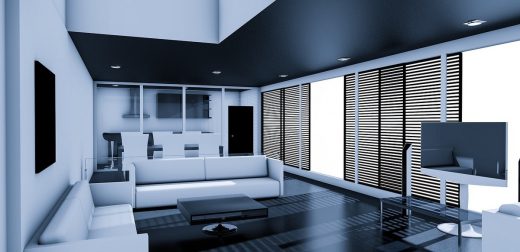Sydney Opera House reimagined with 3D modeling guide, Architectural rendering, Virtual reality, Three dimensional render
Reimagining The Sydney Opera House with 3D Modeling
18 September 2024
Technological advancements have revolutionized modern architecture, changing how buildings are conceived, visualized, and built. One of the most impactful innovations is 3D modeling, which enables architects to perfect designs in a virtual space before construction begins.
This tool allows for the exploration of complex forms, structural analysis, and precise design adjustments, streamlining the entire architectural process. A notable example of a structure that could have greatly benefited from 3D modeling is the Sydney Opera House. Its iconic design, characterized by intricate geometries, posed significant challenges during its construction. With the advanced capabilities of 3D modeling service in architecture today, these challenges could have been resolved more efficiently, saving time, cost, and effort while maintaining the integrity of the original design vision.
The Sydney Opera House As A Marvel Of Design And Engineering
The Sydney Opera House, located on Bennelong Point in Sydney, is one of the most recognized architectural structures in the world. Designed by Danish architect Jørn Utzon, it was chosen in 1957 through an international competition. Utzon’s vision was revolutionary—its distinctive shell-like roof pushed the boundaries of architectural design. However, the ambitious nature of the project turned it into an engineering nightmare, particularly because the available tools at the time were not sufficient to handle its complex geometry.
Construction began in 1959 but was not completed until 1973, a staggering 14 years later. The delays were largely caused by the challenges presented by the building’s innovative form. The Opera House’s roof features multiple interlocking shells that were difficult to conceptualize using the 2D drafting techniques of the 1960s. Architects and engineers often relied on physical models and trial-and-error methods to bring Utzon’s vision to life.
Had 3D modeling technology been available during this period, the entire process would have been streamlined, saving time, reducing costs, and potentially preserving Utzon’s involvement until the project’s completion.
The Transformative Power Of 3D Modeling in Architecture
3D modeling in designing the architecture allows for the creation of three-dimensional digital representations of buildings. Programs like Autodesk Revit, Rhino, SketchUp, and BIM (Building Information Modeling) enable architects to explore complex shapes, assess structural integrity, simulate environmental factors, and refine designs. These models serve as an invaluable tool, allowing architects to collaborate more effectively with engineers, clients, and construction teams. 3D modeling offers immense advantages when working with complex forms—such as those found in the Sydney Opera House.
Design Challenges Of The Sydney Opera House
Utzon’s design for the Opera House was groundbreaking but posed numerous technical difficulties. One of the biggest challenges was constructing the shell-like roofs. Originally conceived as parabolic arches, engineers struggled to find a practical way to construct these forms. The technology of the 1960s, limited to 2D drafting, couldn’t accurately capture the nuances of Utzon’s vision. As a result, the team was forced to rely heavily on physical models, which led to delays and numerous revisions.
The absence of 3D modeling also hampered structural analysis. The engineers faced constant obstacles in ensuring the roof would be structurally sound. With no digital simulation tools available, they resorted to time-consuming trial-and-error methods, which increased both the project’s timeline and budget. Additionally, the complexity of the design led to miscommunications among the different teams, further complicating the construction process.
Utzon eventually resigned from the project in 1966 due to these mounting difficulties, leaving others to complete the structure. While the Sydney Opera House was finally finished, it was at a significant cost—14 times the original budget estimate.
How 3D Modeling Would Have Transformed the Sydney Opera House Project
Had 3D modeling been available, the construction process for the Sydney Opera House would have been radically different. The technology would have addressed many of the key challenges:
Visualization and Form Creation: The Opera House’s shell-like forms were notoriously difficult to conceptualize. 3D modeling software would have allowed Utzon’s team to digitally explore these shapes and configurations, test angles, and refine curves without the need for physical models. This would have enabled more precise translations of Utzon’s original vision, reducing the risk of costly errors during construction.
Structural Analysis: One of the greatest benefits of 3D modeling in architecture is its ability to simulate a building’s structural behavior. Using software like Revit or Rhino, the engineers could have analyzed how the Opera House’s complex forms would handle loads and stresses, identifying weak points in advance. This would have significantly reduced the trial-and-error approach that contributed to the delays and cost overruns.
Collaboration Between Teams: During the construction of the Opera House, communication breakdowns between architects, engineers, and builders caused delays. A shared 3D model would have improved coordination among all parties. Everyone involved would have been able to visualize the project in real time, ensuring that decisions were aligned and progress was synchronized.
Cost and Time Efficiency: The 14-year construction timeline and ballooning costs were partially a result of the need to manually revise designs and build physical models. 3D modeling would have streamlined this process, allowing for quicker revisions and real-time testing. By minimizing the need for physical models and reducing construction delays, the overall cost of the project could have been controlled more effectively.
Environmental and Acoustical Analysis: The Sydney Opera House is not only a visual masterpiece but also a functional performance venue where acoustics are critical. 3D modeling software now allows architects to simulate sound behavior within spaces, ensuring optimal acoustics from the outset. Similarly, environmental analysis tools could have helped optimize the building’s interaction with natural light, wind, and other external factors, contributing to a more sustainable design.
The Role Of 3D Modeling In Modern Architecture
Today, 3D modeling is a cornerstone of designing contemporary architecture. Buildings that feature complex geometries, like the Guggenheim Museum Bilbao and the Burj Khalifa, would have been impossible to design using traditional 2D methods. Frank Gehry’s Guggenheim Museum, for instance, features curvilinear forms that were developed using advanced modeling software. This allowed Gehry to create a building that was both structurally sound and aesthetically groundbreaking.
Similarly, the Burj Khalifa in Dubai, the tallest building in the world, posed significant engineering challenges. Architects used 3D modeling to simulate wind resistance, load distribution, and other critical factors to ensure the building’s stability and safety.
These examples demonstrate how far architectural design has come with the advent of digital tools like 3D modeling. The ability to create, visualize, and test complex forms in a virtual space has expanded the possibilities of what can be built, allowing architects to cross the frontiers of design while maintaining structural integrity and functionality.
Building 3D modeling Conclusion
The Sydney Opera House is a symbol of architectural innovation, but the challenges encountered during its construction highlight the limitations of mid-20th-century design tools. Had 3D modeling been available, the process would have been more efficient, cost-effective, and aligned with Utzon’s original vision.
Today, 3D modeling in architecture enables the design of buildings that are more complex, sustainable, and functional than ever before. As technology continues to evolve, architects will be able to realize increasingly ambitious projects, ensuring that the future of architecture is as innovative as the Sydney Opera House was in its time.
Comments on this guide to Sydney Opera House reimagined with 3D modeling article are welcome
3D rendering
CGI and 3D Posts
Architectural and Interior Design 3D Visualization Benefits
2D and 3D Architectural Rendering

Architectural Designs
London Architecture Designs – chronological list
London Architect – design practice listing on e-architect
Comments / photos for the Reimagining The Sydney Opera House with 3D Modeling advice page welcome.




